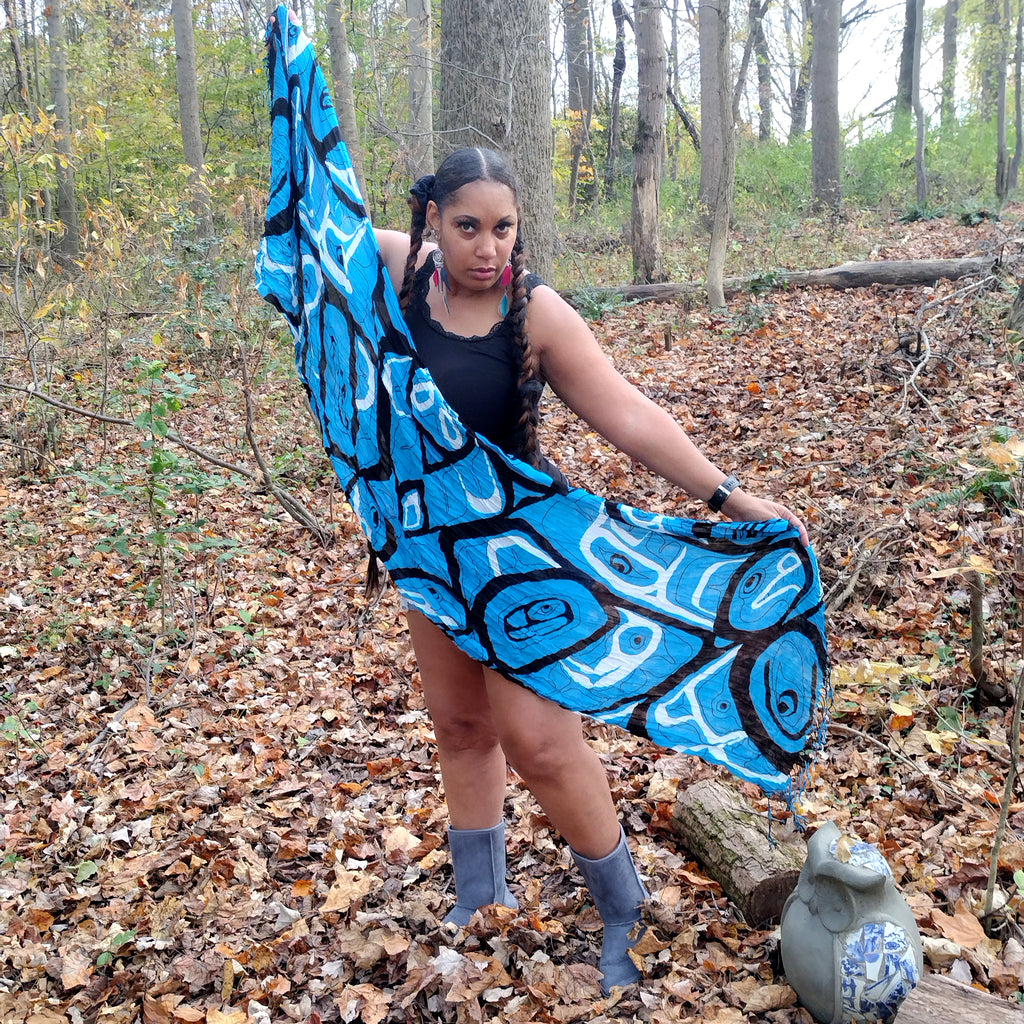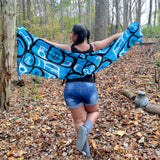



Intention Blue Viscose Scarf
- 100% viscose
- 27 1/2 X 70 inches
- Hand wash in cold water, lay flat to dry
- Designed by Nisga'a, Tlingit, Tsimshian artist Mike Dangeli from Vancouver Island, B.C., Canada
-
With his words of "Clarity and truth provide focus, direction and passion," we are pleased to offer artist Mike Dangeli's design on our striking blue scarf. It is soft and comfortable to wear and with effortless style makes a great addition to any wardrobe.
-
The form of these agreements was nearly identical to the Treaty of Paris, which ended the Revolutionary War between the U.S. and Great Britain. The negotiations resulted in a mutually signed pact that had to be approved by the U.S. Congress. Nontribal citizens were required to have a passport to cross sovereign Indian lands.
From 1774 until about 1832, treaties between individual sovereign American Indian nations and the United States were negotiated to establish borders and prescribe conditions of behavior between the parties.
The form of these agreements was nearly identical to the Treaty of Paris, which ended the Revolutionary War between the U.S. and Great Britain. The negotiations resulted in a mutually signed pact that had to be approved by the U.S. Congress. Nontribal citizens were required to have a passport to cross sovereign Indian lands.
From 1832 until 1871, American Indian nations were considered domestic, dependent tribes. In 1871, the House of Representatives ceased to recognize individual tribes within the U.S. as independent nations with which the U.S. could contract by treaty. This ended the nearly 100-year-old practice of treaty-making between the U.S. and American Indian tribes.
The online exhibit "Rights of Native Americans" includes a visual timeline of the history of American Indian treaties and Native American activism to defend tribal sovereignty.